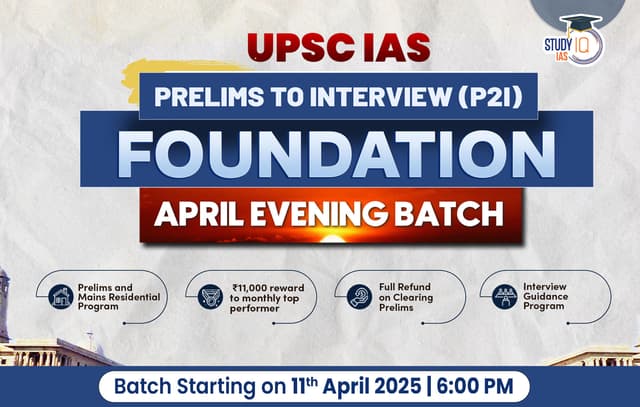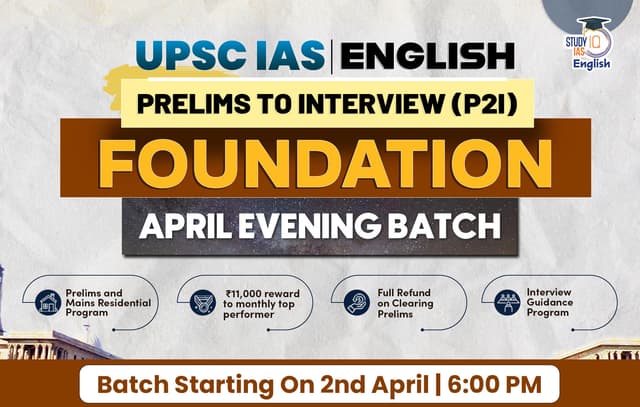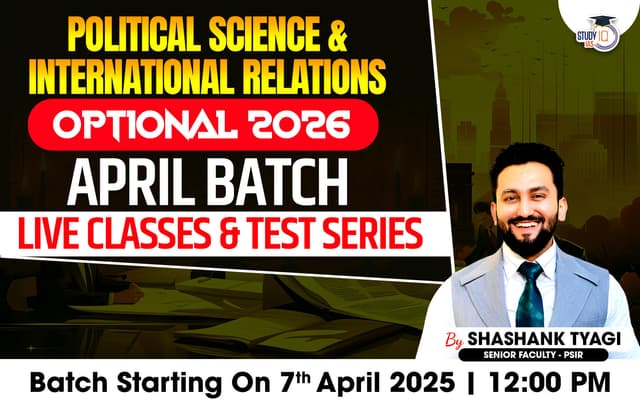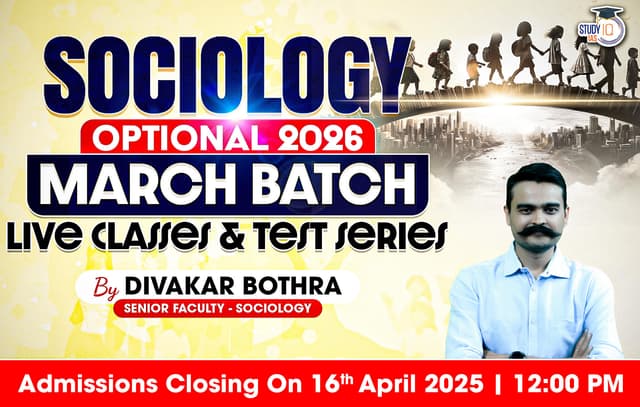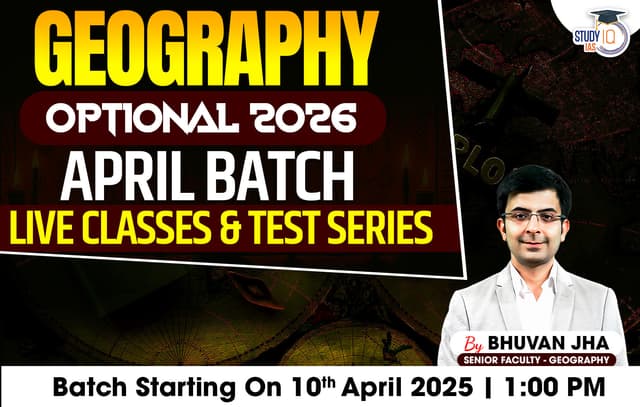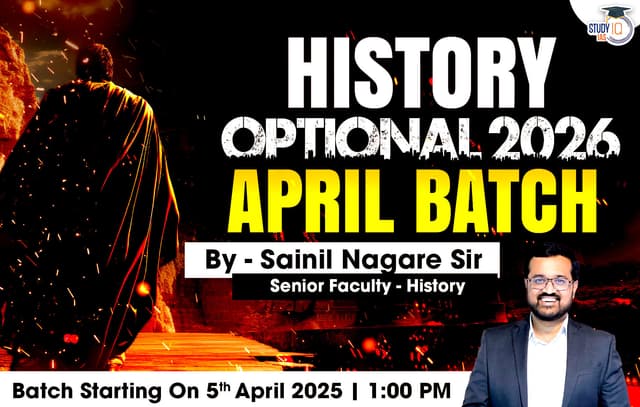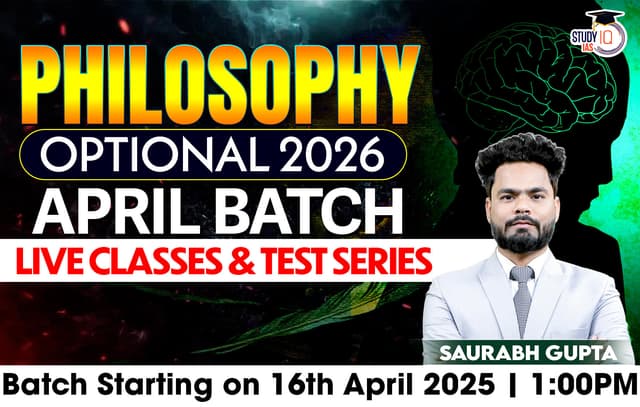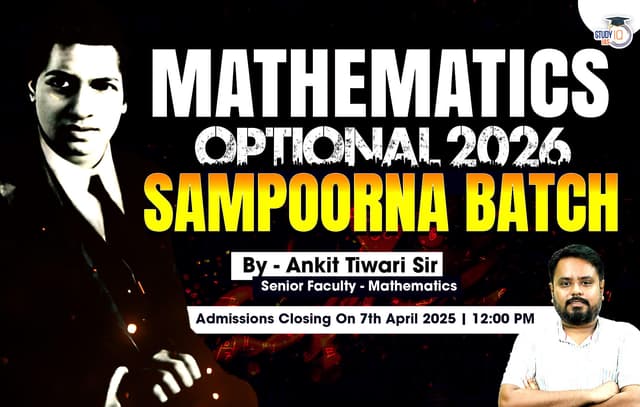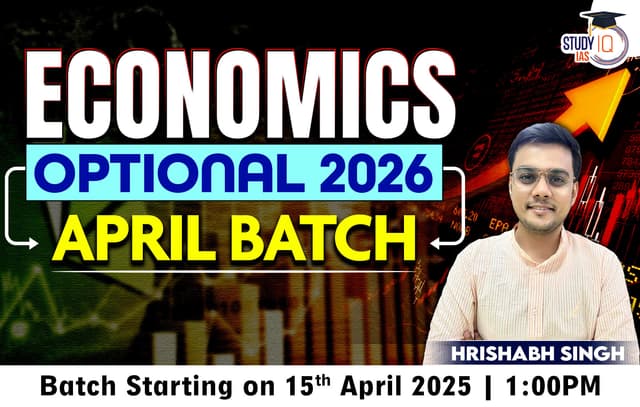Daily Quiz 02 January 2025
Quiz-summary
0 of 5 questions completed
Questions:
- 1
- 2
- 3
- 4
- 5
Information
- Click on – ‘Start Quiz’ button
- Solve Questions
- Click on ‘Next’ button
- Click on ‘Finish Quiz’ button
- Now click on ‘View Questions’ button – here you will see solutions and links.
- The test contains a total of 5 questions.
- Click on the most appropriate option to mark it as your answer.
- You will be awarded Two marks for each correct answer.
- You can change your answer by clicking on some other option.
- A Number list of all questions appears at the top side of the screen.
- You can access the questions in any order by clicking on the question number given on the number list.
- You can use rough sheets while taking the test.
- Do not use calculators, log tables, dictionaries, or any other printed/online reference material during the test.
- Do not click the button “Finish Quiz” before completing the test. A test once submitted cannot be resumed.
You have already completed the quiz before. Hence you can not start it again.
Quiz is loading...
You must sign in or sign up to start the quiz.
You have to finish following quiz, to start this quiz:
- 1
- 2
- 3
- 4
- 5
- Answered
- Review
-
Question 1 of 5
1. Question
1 pointsWith reference to the Global Digital Compact (GDC), consider the following statements:
1. It was adopted during the United Nations’ “Summit of the Future” in 2024 by its member countries.
2. It is a legally binding international agreement that enforces global standards for digital technology governance.
Which of the statements given above is/are correct?Correct
Answer: A
Explanation:
● Statement 1 is correct: The Global Digital Compact was adopted by United Nations (UN) member states as an annex to the Pact for the Future, in 2024 during the Summit of the Future.
● Statement 2 is not correct: The GDC is not a binding law but a diplomatic instrument with a set of shared goals for governments, institutions, firms, and other stakeholders to bear in mind. Once there is greater adherence, the terms of the compact may become soft laws in each countryIncorrect
Answer: A
Explanation:
● Statement 1 is correct: The Global Digital Compact was adopted by United Nations (UN) member states as an annex to the Pact for the Future, in 2024 during the Summit of the Future.
● Statement 2 is not correct: The GDC is not a binding law but a diplomatic instrument with a set of shared goals for governments, institutions, firms, and other stakeholders to bear in mind. Once there is greater adherence, the terms of the compact may become soft laws in each country -
Question 2 of 5
2. Question
1 pointsConsider the following statements about Batagur baska (Northern River Terrapin):
- It is an estuarine species inhabiting mangrove-lined rivers and nesting on sandy beaches.
- It helps in supporting seed dispersal and mineral cycling.
- Habitat loss and increased salinity in the Sundarbans are major threats to its survival.
- It is classified as ” Endangered” in the IUCN Red List of Threatened Species.
Which of the statements given above is/are correct?
Correct
Answer: B
Explanation:
- Statement 1 is correct: Northern river terrapin (Batagur baska) is a terrapin uniquely adapted to mangroves. Once found in abundance in the mangrove-lined rivers and estuaries in Myanmar and in the Sundarbans across India and Bangladesh
- Statement 2 is correct: The northern river terrapin is an omnivorous It maintains the aquatic food chain by feeding on fish, invertebrates, and carrion and plant materials. It helps in seed dispersal and also plays a key role in mineral cycling. With an olive-grey carapace (hard upper shell), it can blend seamlessly with the alluvial soil base of the Sundarban Tiger Reserve (STR).
- Statement 3 is correct: Habitat loss and increased salinity in the Sundarbans are major threats to its survival. Habitat loss is a detriment behind Batagur baska’s current unfortunate stature in India. The construction of the Farakka barrage across the Ganga river has reduced the amount of freshwater flowing into the Sundarbans reserve. In the past two decades, tropical cyclones in the Sundarbans region have eroded the sandy beaches, which are the potential nesting sites of Batagur baska.
Statement 4 is not correct: It is classified as ” Critically Endangered” in the IUCN Red List of Threatened Species
Incorrect
Answer: B
Explanation:
- Statement 1 is correct: Northern river terrapin (Batagur baska) is a terrapin uniquely adapted to mangroves. Once found in abundance in the mangrove-lined rivers and estuaries in Myanmar and in the Sundarbans across India and Bangladesh
- Statement 2 is correct: The northern river terrapin is an omnivorous It maintains the aquatic food chain by feeding on fish, invertebrates, and carrion and plant materials. It helps in seed dispersal and also plays a key role in mineral cycling. With an olive-grey carapace (hard upper shell), it can blend seamlessly with the alluvial soil base of the Sundarban Tiger Reserve (STR).
- Statement 3 is correct: Habitat loss and increased salinity in the Sundarbans are major threats to its survival. Habitat loss is a detriment behind Batagur baska’s current unfortunate stature in India. The construction of the Farakka barrage across the Ganga river has reduced the amount of freshwater flowing into the Sundarbans reserve. In the past two decades, tropical cyclones in the Sundarbans region have eroded the sandy beaches, which are the potential nesting sites of Batagur baska.
Statement 4 is not correct: It is classified as ” Critically Endangered” in the IUCN Red List of Threatened Species
-
Question 3 of 5
3. Question
1 pointsConsider the following:
- All receipts into and spending from the coffers called the Consolidated Fund of the State Governments
- All transactions relating to the monies of the public held by the Government in Postal savings, at State levels
- All trading, manufacturing and other subsidiary accounts kept in any Government department
- Accounts of all autonomous bodies and authorities receiving Government money
- Accounts of any body or authority on request of the President/Governor or on his/her own initiative
How many of the above are audited by the Comptroller and Auditor General of India?
Correct
Answer: D
Explanation:
- As envisaged in Article 149 of the Constitution of India, the Parliament enacted a detailed legislation called the Comptroller and Auditor General of India (CAG’s) Duties, Powers and Conditions Act in 1971 which describes his mandate and puts almost every spending, revenue collecting or aid/grant receiving unit of the Government (the Centre and the States) under his audit domain. His duties are to audit and report upon:
- Point 1 is correct: All receipts into and spending from the coffers (called the Consolidated Fund) of the Union and State Governments.
- Point 2 is correct: All transactions relating to the Emergency expenses (called Contingency Funds) and relating to the monies of the public held by the Government e.g. Postal savings, Vikas Patras (called Public Accounts) at Central as well as State levels.
- Point 3 is correct: All trading, manufacturing, profit and loss accounts, balance sheets and other subsidiary accounts kept in any Government department.
- All stores and stock accounts of all Government offices and departments.
- Accounts of all Government companies and Corporations e.g. ONGC, SAIL etc.
- Point 4 is correct:Accounts of all autonomous bodies and authorities receiving Government money e.g. municipal bodies, IIM’s, IIT’s, State Health societies.
- Point 5 is correct: Accounts of any body or authority on request of the President/Governor or on his own initiative.
The Act also provides for compilation of accounts of the State Governments from the subsidiary accounts maintained by the State Governments
Incorrect
Answer: D
Explanation:
- As envisaged in Article 149 of the Constitution of India, the Parliament enacted a detailed legislation called the Comptroller and Auditor General of India (CAG’s) Duties, Powers and Conditions Act in 1971 which describes his mandate and puts almost every spending, revenue collecting or aid/grant receiving unit of the Government (the Centre and the States) under his audit domain. His duties are to audit and report upon:
- Point 1 is correct: All receipts into and spending from the coffers (called the Consolidated Fund) of the Union and State Governments.
- Point 2 is correct: All transactions relating to the Emergency expenses (called Contingency Funds) and relating to the monies of the public held by the Government e.g. Postal savings, Vikas Patras (called Public Accounts) at Central as well as State levels.
- Point 3 is correct: All trading, manufacturing, profit and loss accounts, balance sheets and other subsidiary accounts kept in any Government department.
- All stores and stock accounts of all Government offices and departments.
- Accounts of all Government companies and Corporations e.g. ONGC, SAIL etc.
- Point 4 is correct:Accounts of all autonomous bodies and authorities receiving Government money e.g. municipal bodies, IIM’s, IIT’s, State Health societies.
- Point 5 is correct: Accounts of any body or authority on request of the President/Governor or on his own initiative.
The Act also provides for compilation of accounts of the State Governments from the subsidiary accounts maintained by the State Governments
-
Question 4 of 5
4. Question
1 pointsConsider the following statements with reference to the Employee Pension Scheme (EPS):
- It is a social security scheme introduced by the Union Ministry of Commerce and Industry.
- It helps members aged 58 and above claim their pension.
- Both the employee and employer contribute 12% of the employee’s basic salary and dearness allowance (DA) to the scheme.
Which of the statements given above is/are correct?
Correct
Answer: B
Explanation:
- Statement 1 is not correct: The Employee Pension Scheme 1995 (EPS 95) is a social security scheme introduced by the Employees’ Provident Fund Organisation (EPFO) in
- Statement 2 is correct: Designed to provide financial support to employees after retirement, the EPFO administers the scheme and helps members aged 58 and above claim their pension.
Statement 3 is correct: Both new and existing EPF members can benefit from EPS 95. Both the employee and employer contribute 12% of the employee’s basic salary and dearness allowance (DA) to the scheme.
Incorrect
Answer: B
Explanation:
- Statement 1 is not correct: The Employee Pension Scheme 1995 (EPS 95) is a social security scheme introduced by the Employees’ Provident Fund Organisation (EPFO) in
- Statement 2 is correct: Designed to provide financial support to employees after retirement, the EPFO administers the scheme and helps members aged 58 and above claim their pension.
Statement 3 is correct: Both new and existing EPF members can benefit from EPS 95. Both the employee and employer contribute 12% of the employee’s basic salary and dearness allowance (DA) to the scheme.
-
Question 5 of 5
5. Question
1 pointsConsider the following statements:
- Excessive ammonium nutrients in the water can lead to harmful algal blooms.
- Traditional ammonium removal methods from wastewater involve oxygenation, which is energy-intensive.
- Nitrate is converted into nitrogen under anoxic conditions.
Which of the statements given above are correct?
Correct
Answer: D
Explanation:
- Statement 1 is correct: Most of the wastewater in India is generated from agricultural runoff, industrial effluents, and sewage, all of which contain various toxic chemicals. One of the most concerning pollutants in significant quantities is ammonium. Formed from gaseous ammonia, ammonium is a highly toxic nitrogen compound that can exist as nitrate, nitrite, or ammonia. It poses serious risks to living organisms, being lethal to animal cells and harmful to aquatic life. Ammonium can also cause water acidification and contribute to eutrophication, where excessive nutrients in the water lead to harmful algal blooms.
- Statement 2 is correct: Traditional ammonium removal methods involve oxygenation, which is energy-intensive, accounting for up to 90% of a treatment plant’s energy consumption.
- The first step is converting ammonia into another, less harmful nitrogen species like nitrite or nitrate through oxidation. For this, it needs a supply of oxygen. Then the system is aerated by means of any pumping mechanism or mechanical operations or even supply pure air into the system by compressed air and so on. This is energy consuming, and the major cost involved in the wastewater treatment
Statement 3 is correct: Ammonia oxidation to nitrogen requires oxygen, while nitrate conversion to nitrogen occurs under anoxic conditions.
Incorrect
Answer: D
Explanation:
- Statement 1 is correct: Most of the wastewater in India is generated from agricultural runoff, industrial effluents, and sewage, all of which contain various toxic chemicals. One of the most concerning pollutants in significant quantities is ammonium. Formed from gaseous ammonia, ammonium is a highly toxic nitrogen compound that can exist as nitrate, nitrite, or ammonia. It poses serious risks to living organisms, being lethal to animal cells and harmful to aquatic life. Ammonium can also cause water acidification and contribute to eutrophication, where excessive nutrients in the water lead to harmful algal blooms.
- Statement 2 is correct: Traditional ammonium removal methods involve oxygenation, which is energy-intensive, accounting for up to 90% of a treatment plant’s energy consumption.
- The first step is converting ammonia into another, less harmful nitrogen species like nitrite or nitrate through oxidation. For this, it needs a supply of oxygen. Then the system is aerated by means of any pumping mechanism or mechanical operations or even supply pure air into the system by compressed air and so on. This is energy consuming, and the major cost involved in the wastewater treatment
Statement 3 is correct: Ammonia oxidation to nitrogen requires oxygen, while nitrate conversion to nitrogen occurs under anoxic conditions.
Results
0 of 5 questions answered correctly
Your time:
Time has elapsed
You have reached 0 of 0 points, (0)
| Average score |
|
| Your score |
|
Categories
- Not categorized 0%
| Pos. | Name | Entered on | Points | Result |
|---|---|---|---|---|
| Table is loading | ||||
| No data available | ||||
Sharing is caring!

 Daily Quiz 15 April 2025
Daily Quiz 15 April 2025
 Daily Quiz 09 April 2025
Daily Quiz 09 April 2025

